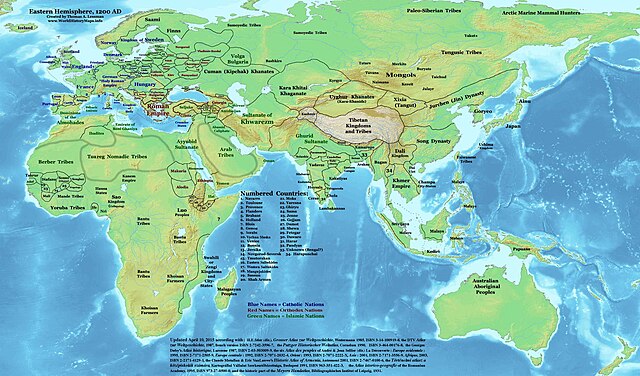Karakorum was the capital of the Mongol Empire between 1235 and 1260 and of the Northern Yuan dynasty in the 14–15th centuries. Its ruins lie in the northwestern corner of the Övörkhangai Province of modern-day Mongolia, near the present town of Kharkhorin and adjacent to the Erdene Zuu Monastery, which is likely the oldest surviving Buddhist monastery in Mongolia. They are in the upper part of the World Heritage Site Orkhon Valley.
Erdene Zuu Monastery
Stupas around Erdene Zuu Monastery in Karakorum
13th-century stone turtle (bixi)
The Silver Tree of Karakorum. 18th-century Dutch imagination.
The Mongol Empire of the 13th and 14th centuries was the largest contiguous empire in history. Originating in present-day Mongolia in East Asia, the Mongol Empire at its height stretched from the Sea of Japan to parts of Eastern Europe, extending northward into parts of the Arctic; eastward and southward into parts of the Indian subcontinent, attempted invasions of Southeast Asia, and conquered the Iranian Plateau; and westward as far as the Levant and the Carpathian Mountains.
Mongol tribes during the Khitan Liao dynasty (907–1125)
The Old World on the eve of the Mongol invasions, c. 1200
Genghis Khan, National Palace Museum in Taipei, Taiwan
Genghis Khan ascended the throne in the Ikh Khuraldai region in the Onan river, from the Jami' al-tawarikh.








